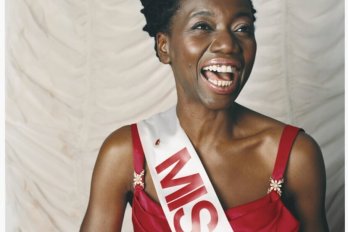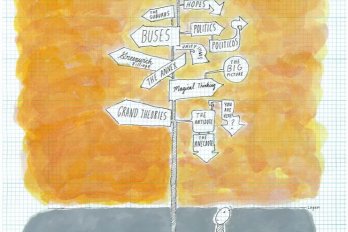Paris—The Caravelle was once the shimmering flagship of public housing in Gaullist France. One of its gargantuan wings looked like a horizontal skyscraper, a concrete slab just ten storeys high but almost half a kilometre long. In 1968, when it opened in Villeneuve-la-Garenne, on the outskirts of Paris, the apartment complex was meant to be, true to Le Corbusier, a functionalist “city within the city.” But for the 1,684 low-income families who moved in, the Caravelle turned into a graffiti-covered ghetto where drug trafficking thrived and all other businesses—even the local bakery—collapsed.
To address the problem, in 1994 local authorities turned to architect Roland Castro. I meet up with him on the Place Charles de Gaulle, one of many access points to the site. His black overcoat makes this amiable, cigarette-puffing bon vivant look more conservative than he is. Castro is arguably the best-known architect in France, though less for his work than for his unconventional politics. Since the early 1960s, when he met the more famous Castro, he has successively been a Communist, a Maoist, a May ‘68 libertarian, and an urban affairs adviser to Socialist president François Mitterrand. He is now campaigning for the French presidency as a genuine long shot.
“Having advised princes and seen it accomplish nothing, I figured I could become a prince myself,” Castro jests. An unremitting critic of French centralism, he has even suggested moving the presidential palace from the Champs Élysées to a banlieue (suburb). Still, many of his eighty-nine campaign proposals have struck a chord, not only among leftists who pine for another 1789, but among voters who believe that the country’s attention should finally shift from the centre to the periphery.
Castro’s piercing green eyes scrutinize the Caravelle. He carved up the main building, which he calls the “Great Wall of China,” into three separate units. Streets and alleys now crisscross the site, allowing people and vehicles (including police cars) to roam about. When the sidewalk was at the very foot of the building, pedestrians had to hug a crushing, ten-storey wall. Only the graffiti, it seems, differentiated the long string of identical entrance halls. Now, the alley looks decent, even dignified, with small but snazzy-looking front yards that force pedestrians to keep their distance, affording them a view of their street, a perspective. There is no graffiti at all, which doesn’t surprise Castro: “People respect premises when premises respect people.”
After creating openings through the Great Wall, Castro annexed smaller buildings, some all circles and curves, at the beginning and end of each newly created apartment block. By adding diversity in height and style (but not colour) and by fracturing seemingly endless lines with new bow windows, balconies, and terraces, he has made the alley look like a normal city street in middle-of-the-road France.
The remodelling, Castro believes, is the reason why Caravelle residents did not join the riots that engulfed so many French suburbs in late 2005. In a three-week period, angry youths burned more than 9,000 cars; 126 police officers were injured, and one man died. In addition, a number of buildings were destroyed or damaged. Castro’s Caravelle was not one of them.
Many analysts blamed the violence on high unemployment and police harassment. (In Villeneuve-la-Garenne, the jobless rate is 17 percent, almost twice the national figure.) Others, including Castro, also blame architecture and urban planning. As we walk around the site, a teen in standard issue streetwear saunters over. “Is there a problem?” he asks, staring at my notebook. We let him take us to his leader. We introduce ourselves to the multiracial gang of six, extending open palms, our promise of peace. “You don’t have to take my picture,” the youngest-looking boy snaps. “The police already have it.” All I want to know is what he thinks of his newly renovated home. “It’s bad for business,” he complains. “But we’re still here.”
Drug dealers initially opposed the changes, and they even tarred and burned some of the earlier improvements. The problem hasn’t disappeared, Castro concedes, but the situation has improved. “A few years ago, you couldn’t have had a conversation with these people,” he says.
The Caravelle project should be completed by late 2008, fourteen years after it started. Why so long? “Because this is France,” says Castro. “I love this country, but it drives me nuts.” He can profess his love of France without arousing suspicion of being a nationalist right winger, thanks to his own immigrant background. During the war, his Greek- Jewish family went into hiding in a village outside Limoges, surviving with the help of the Communist Party. Many immigrants still see France as a “promised land,” says Castro. But he believes the country, like so many of the banlieues he has worked on, needs refurbishment. He would like multicultural France to proclaim itself a république métissée, a republic of mixed blood. He knows this is unlikely and that he is a fringe presidential candidate. But, says Castro, smiling at the foot of the Caravelle, glimmering anew, “I’m strangely optimistic.”





